Panier
Close
- No products in the cart.
Sous total (Hors frais de livraison)
0,00€
Payer
Expédition et livraison
Réparation et maintenance
Wingfoil is an exciting water sport practiced in the open air, in an environment that is not necessarily our own: on water and vast expanses such as the sea, the ocean and large lakes! We’re connected to Mother Nature, and we have to respect her. And we also have to learn how to deal with this environment, and sometimes come face to face with it if we don’t respect certain rules.
Wingfoil is a sport for everyone, with no obvious dangers (except, of course, in the event of a storm). However, an ill-prepared session can sometimes end badly.
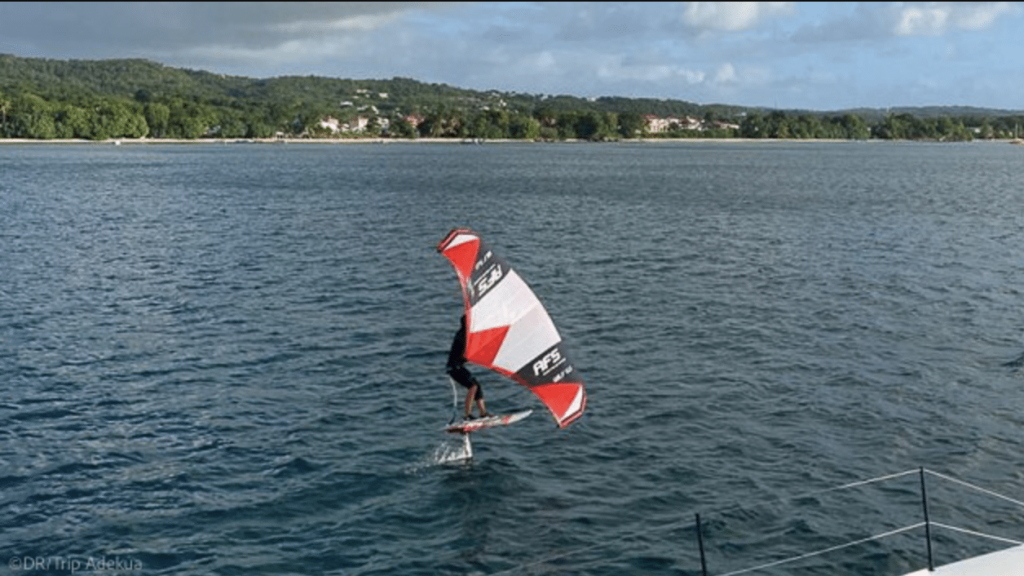
Wingfoil is guaranteed adrenaline, but beware of the risks! The type of spot, the weather conditions, the equipment and the level of the rider are all decisive factors for safe practice.
Sailing safely means sailing serenely and avoiding any problems! Whether you’re a beginner or an expert in wingfoil, you need to have an impeccable sense of responsibility: both for yourself and for others on the spot (wingfoilers and other water sports enthusiasts, swimmers and beachgoers).
Wing spot
Sailing on crowded or obstructed waters can be uncomfortable and dangerous. Beware of shallow areas, rocks and reefs, which can damage your equipment and cause accidents. There can sometimes be a lot of people on the water, and not necessarily just in wings. Especially in summer. Don’t forget that boaters, kitesurfers, windsurfers and dinghies are out there too.
There are also tides to take into account at certain spots, particularly on the Atlantic coast. A falling tide can create counter-currents, while a rising tide can generate powerful waves breaking close to shore (shorebreak).
Weather and environmental conditions
Natural elements, such as wind and currents, strongly influence wingfoil safety. An onshore wind can easily sweep you out to sea, making it difficult to return if you haven’t mastered the upwind climb. What’s more, unexpected waves can lead to more falls and fatigue. That’s why it’s so important to keep up to date with the weather forecast. Whether on your phone or on your computer, through applications such as windguru, winds-up, windy and others. But also on the beach, chatting with other riders. You also need to keep a close eye on the water and everything around you. The key to any session is to be able to read both the horizon and the edge of the beach. We’re often in a hurry to sail because we don’t have the time… Or simply because you’re in a mad rush to get out on the water and indulge in the intense joys of the wing! So we neglect the most important thing of all: studying our playing field. Wing foiling is a discipline that requires a certain amount of vigilance.
Material
The foil can cause serious injury in the event of an uncontrolled fall. Watch out for cuts. Just as impact with your board can cause trauma or fractures. To avoid a large number of falls and a lot of trouble, choose your wingfoil equipment according to your level, without burning the bridges. A board with at least 40 liters more than your body weight + a foil equipped with a front wing of 1600 to 1800 cm² (depending on your size) + a wing with a surface area of 4 m² for the lightest, and 5 m² for the heaviest, so as not to be over-stretched. It’s better to be a little over-canopied than under-canopied. But don’t overdo it! The wing is your engine, so you need surface area to take off and maintain your flight.
Errors in practice and lack of preparation
Poor knowledge of safety instructions and inadequate preparation can lead to accidents. For example, an incorrectly mounted foil or an over-inflated (or under-inflated) wing can cause problems.
Another tip is to learn about the rules of priority: remember that “starboard tack” means that the rider who receives the wind on the right side has priority to pass (right arm in front). The other essential rule is that the “leeward” rider has priority: i.e. the rider furthest from the direction of the wind if two riders are currently receiving the wind on the same side (from the same tack). Finally, the rider who is overtaken by another will also have priority; the overtaking rider must therefore move out of the way.
For more experienced wingfoilers learning to jumps, don’t jump close to others or too close to the edge of the beach, so as not to hurt anyone else. Or sail too close to each other. There’s no such thing as zero risk.
Also, even with a more advanced level of wingfoil, you can get caught by the waves on the shore without even having had time to climb onto your board. Always place yourself between the rolling waves and your board. The wing is in the air and held by the windward hand. The other hand holds the board.
What’s more, for a better session and to limit (sometimes silly) mistakes, you need to take a few breaks. Pulling too hard on the rope can sometimes lead to injury on a simple jibe. Or even trying out a new aerial trick. Get out of the water for a few minutes, drink a little water and rest… And come back in great shape!
To sail safely, it’s important to know your level of wingfoil practice and to anticipate risks.
Choosing the right spot is essential for wingfoiling. It has to be adapted to your skill level, as well as to the configuration of the spot. Whether you’re just starting out or already a little more experienced, the spot you choose must be suited to your skills, the wind conditions and the environment of the navigation zone. Risk-taking must be low.
1. Spots for beginners
For beginners, we recommend flat (or only slightly choppy) water and a steady light to moderate wind, between 15 and 20 knots. Preferably a crosswind (side shore or side onshore). This wind direction allows you to sail safely, without the risk of drifting out to sea. Protected beaches, with few waves and sufficient water depth (around 1.50 to 2 meters), are ideal for avoiding most risks. The condition of the water is essential for good sailing. Just make sure it’s an authorized sailing area. Some places are not, and buoys or a channel indicate this. Especially in summer.
2. Wind conditions and safety
Wind is a key factor in choosing the right spot. A wind that is too strong or from an unfavorable direction (onshore wind) can lead to dangerous situations, such as losing control of your wingfoil. It’s important to check the weather forecast before each session, and to choose a spot where the wind direction makes it easy to return to the coast and your starting point. In addition, be aware of variations in wind strength: it can increase or decrease over the course of the day and your session, impacting the safety of your sailing.
As explained above, the weather and the type of spot need to be analyzed before taking to the water. Before any wingfoil session, check both technical and safety equipment.
Basically, opt for a wing, foil and board that are adapted to your level.
As far as adjustment is concerned, it must be done correctly. Incorrect adjustment of your equipment can affect safety and put you in danger if you check it incorrectly.
Your wing must have the right pressure, the one indicated on your pump’s pressure gauge when you inflate it. If it’s over-inflated, it’s likely to burst during navigation. And if it’s under-inflated, you risk not being able to fly at all, making it difficult to get back to your starting point on the beach.
Every screw on the foil must be tight. A well-assembled foil and a mast well positioned under the float optimize your equipment… And therefore your sailing. If you’re a beginner, too much weight on the stern can be a hindrance. Position your foil in the middle of the rail, or a little further forward, so that you can take off with less effort.
Helmets and impact vests are essential safety accessories. The impact vest protects you in the event of a fall, and also provides extra buoyancy for the rider. A bit like a life jacket, but not as thick. As for the helmet, which must be approved (like the protective vest), it protects you against impact with the board or foil. To prevent cuts. Once in the air, the greater the speed, the greater the risk of a brutal fall. Wing foiling is an “extreme” gliding sport. So protecting yourself means limiting the dangers.
Leashes are another safety feature. Scraths must be properly tightened around the wrist and waist (or ankle). Their respective knots (board leash and wing leash) must be solid. Also, the small cord attached directly to your board’s plug and the one attached to your wing should have a bit of leeway, in case the knot slips. Also, the leash on your board should be long enough to allow you to land far enough away to avoid falling directly onto your gear. Remember to change each leash once you’ve used it more than once. Don’t wait for the leash to break in the middle of a ride, or your wing foil board will drift away without you, and you’ll find yourself without gear, even worse, in the open sea. The same applies on land! In fact, don’t leave your inflated wing alone, unattached either to its board, or to a heavy object or something else anchored on the beach or parking lot. Taking care of your gear before, during and after the session is an additional form of safety for you as a wingfoil rider.
Finally, remember to wear your wetsuit and neoprene booties, adapted to the water temperature. The wetsuit helps prevent hypothermia. It also offers additional protection against abrasions and in the event of a fall or impact.
| Wingfoil safety equipment | Utility |
|---|---|
| Helmet | Protection against impacts with the board, foil, wing handles or boom |
| Impact vestBuoyancy | aid and essential for safety against impact with equipment or in the event of a sudden fall onto the water. |
| Wing leash | Prevent sail loss |
| Board leash | Prevent the loss of your board, which can be used as a buoy. |
| Neoprene wetsuit | Prevents hypothermia during long periods on the water + extra protection against impacts, whatever the season. |
Know your level and limits
Beginners and intermediate wingfoilers must respect the fundamentals of wingfoil to avoid endangering themselves and other riders, who may be kitesurfing, windsurfing, dinghy sailing… or even swimmers in the sailing area.
Don’t overestimate your abilities! In a wing, if you don’t respect certain safety rules and priorities, you can easily hurt yourself (or someone else), or drift. Taking courses at a sailing school to learn basic techniques, such as different points of sail (upwind, for example), wing control and foil management, is the best solution. This considerably reduces risks and dangers, and will make you feel much more at ease once you’re out on the water on your own. With your instructor’s help, you’ll know which equipment to buy next, once you’ve learned how to set up your equipment, the rules of safety and priority, and of course how to glide and fly a wing foil.
Also, more and more riders are carrying a simple cell phone in a waterproof pouch. This can come in handy in the event of a problem. Particularly for downwind wingfoilers. This means sailing off-shore from point A to point B (i.e. without returning to the launch point, but rather to another final destination, with the wind at your back). In addition to an impact vest, helmet, leashes and telephone, the rider is required to take a waterproof backpack with drinking water, food and a distress flare. You can also add a signal mirror and a whistle. If you have a connected watch, put it on! (or other type of GPS). Another tip: the downwinder must notify the CROSS (Centre Régional Opérationnel de Surveillance et de Sauvetage) before any such outing. Maritime regulations define a maximum distance of 2 miles from a coastal shelter.
Always take the time to check all your equipment. But also the environment before you start wingfoiling… And enjoy it to the full. This is the basis for optimum safety, to reduce accidents. Responsible, well-prepared wingfoil flying considerably reduces the risks.
On the other hand, never abandon your wingfoil board, even when you’re in trouble. It’s a bit like a life jacket, a buoy. It’s better to row home than swim home with nothing.
Above all, always let someone know when you’re going out on the water, even if it’s just for an hour. And the name of the spot you’re going to! Wing foiling is even more awesome when you do it as safely as possible!
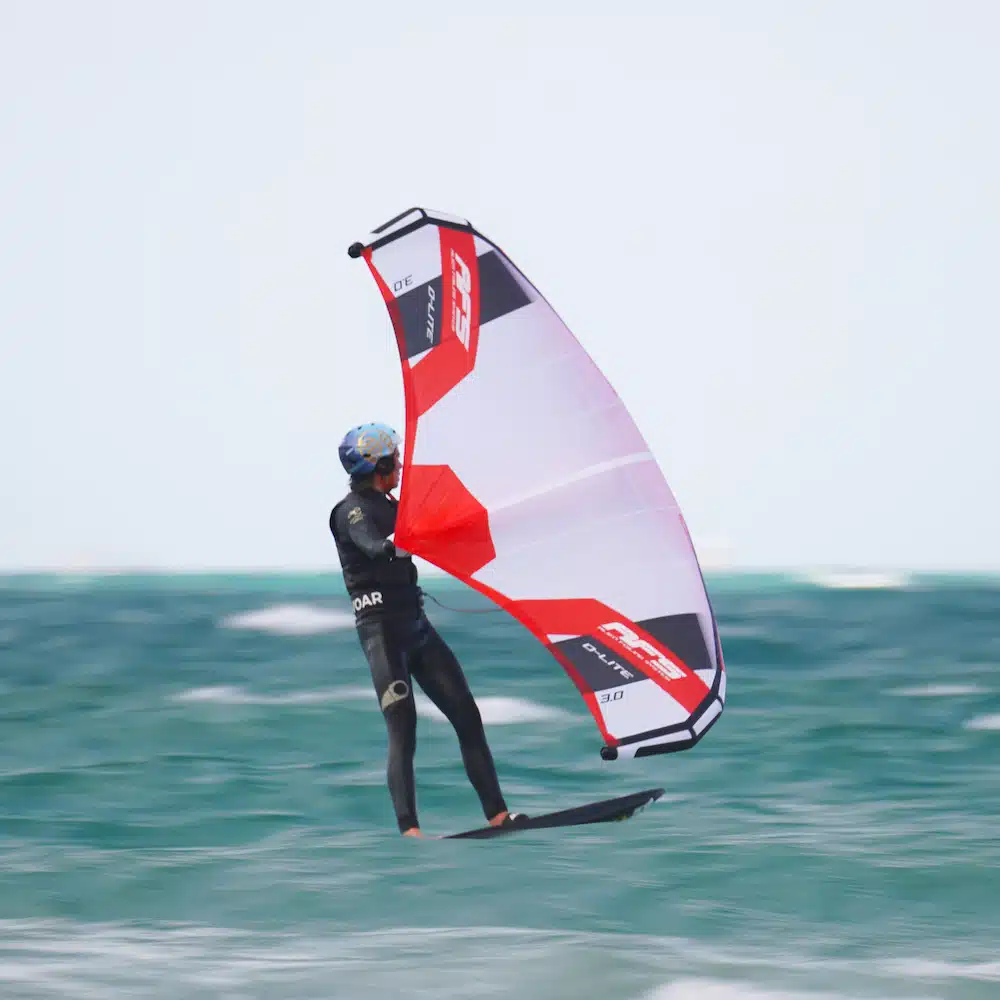
Click & Collect
Secure payment in 3 or 4 instalments
Advice from enthusiasts
Satisfied or your money back
2 to 3 years warranty
Worldwide delivery
Votre emplacement actuel et les langues disponibles
Your current location and available languages
Build your complete foil equipment according to your practice and objectives.
Answer a few quick questions and get a suggestion.
Compare up to three stabilizers side by side.
Coming soon...
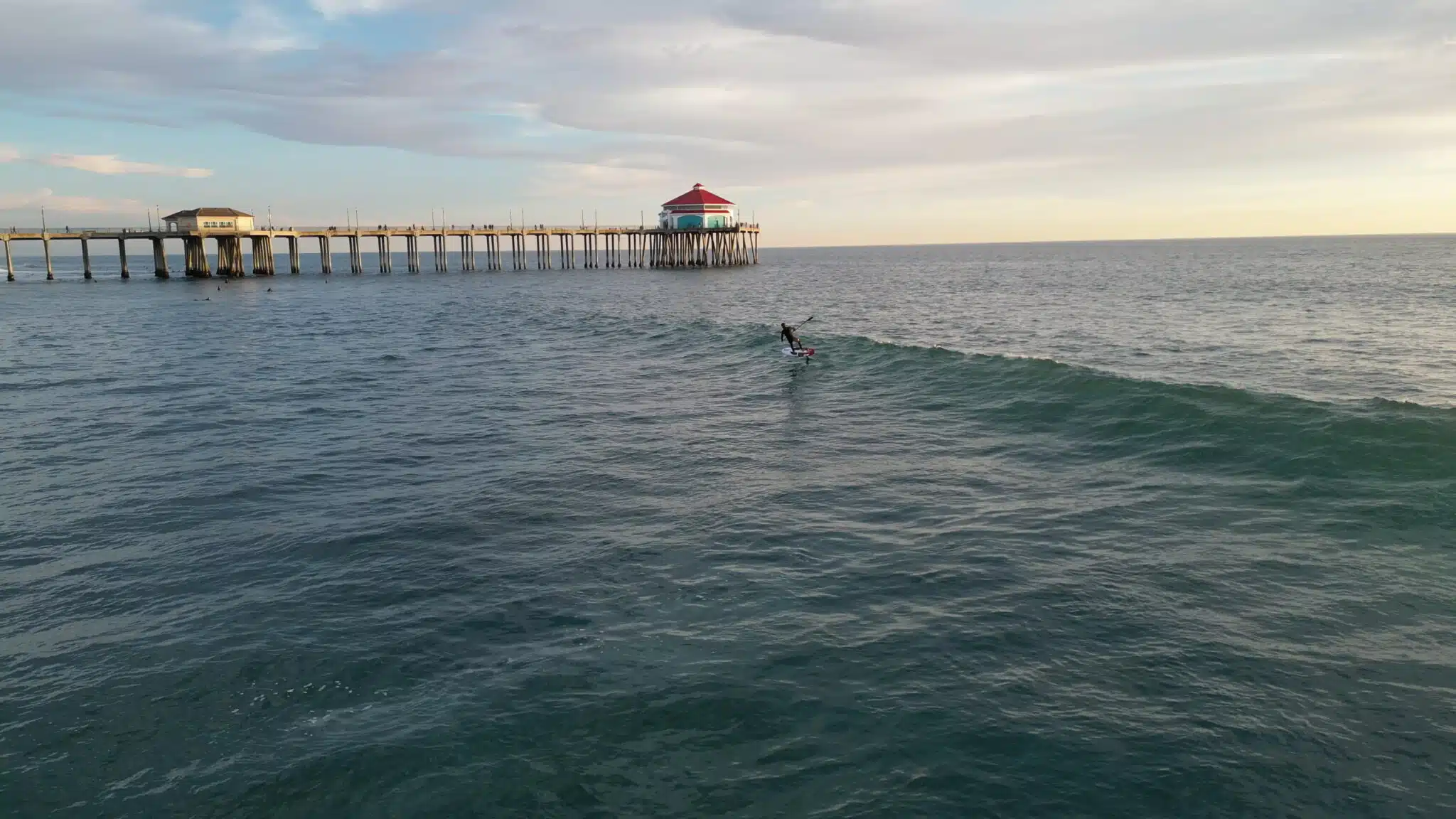
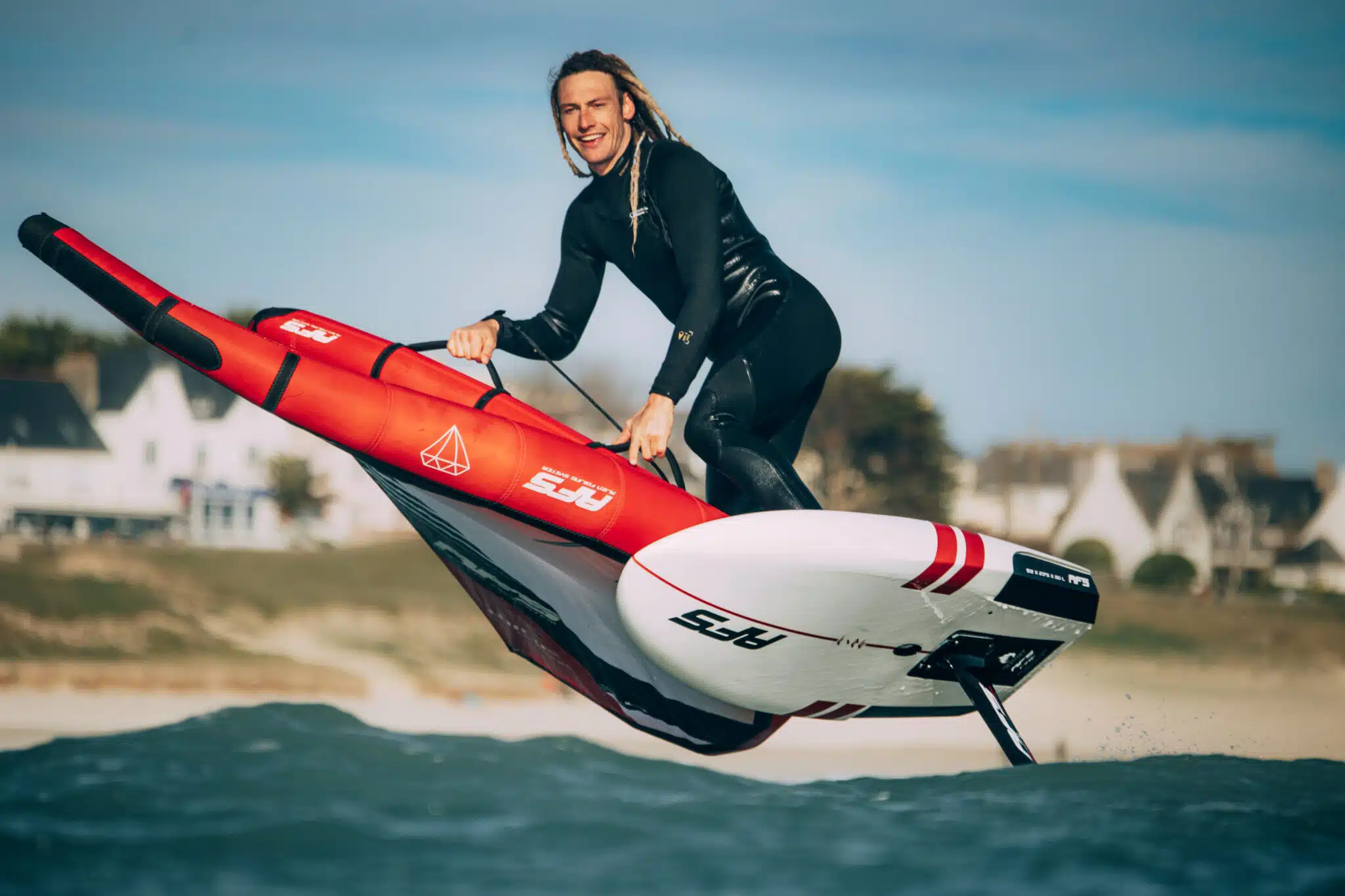

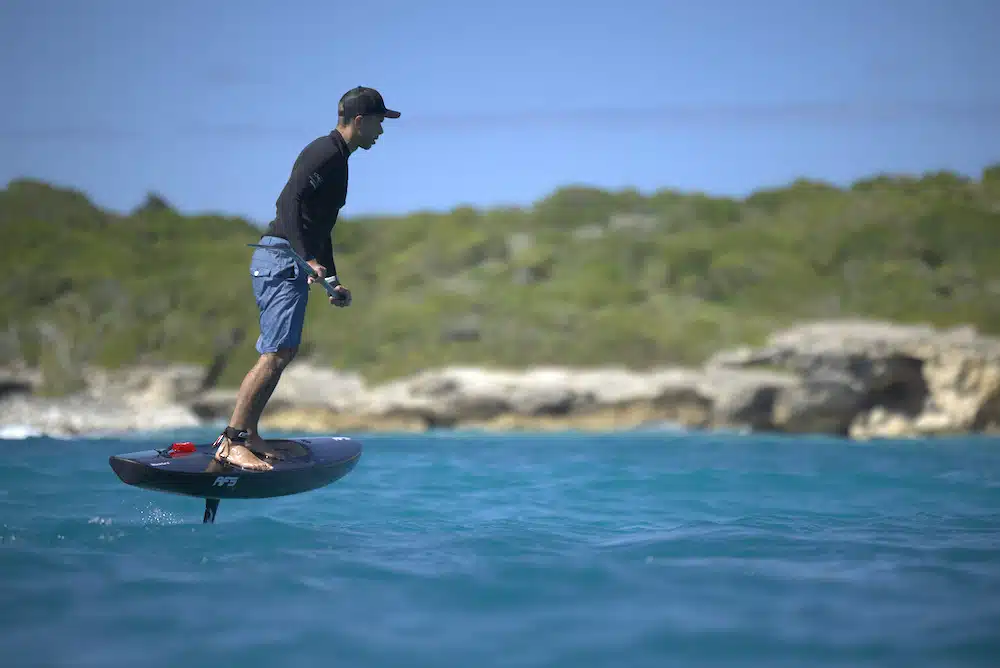
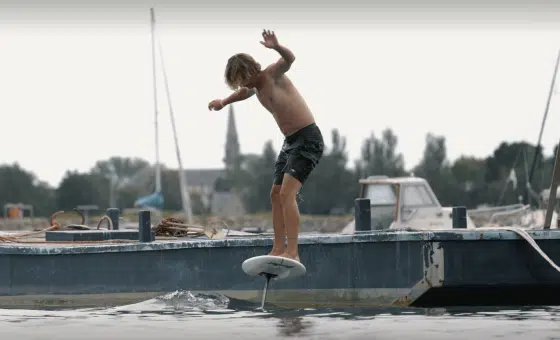
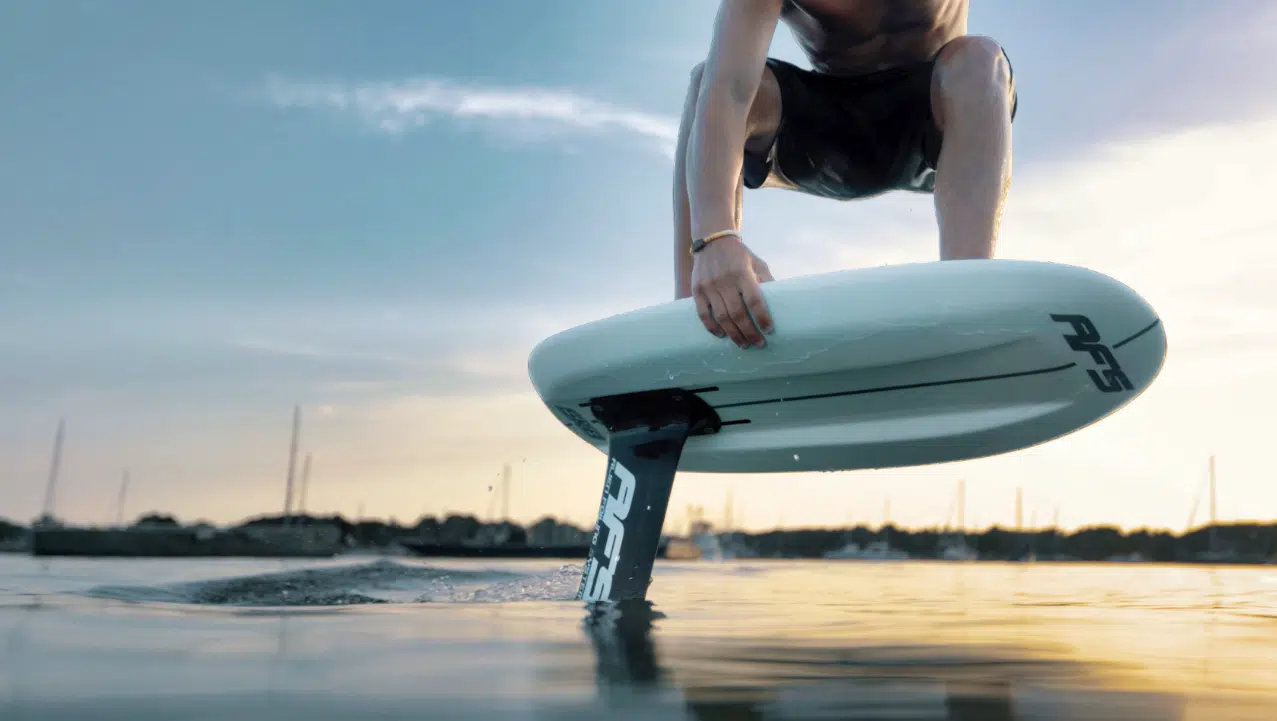
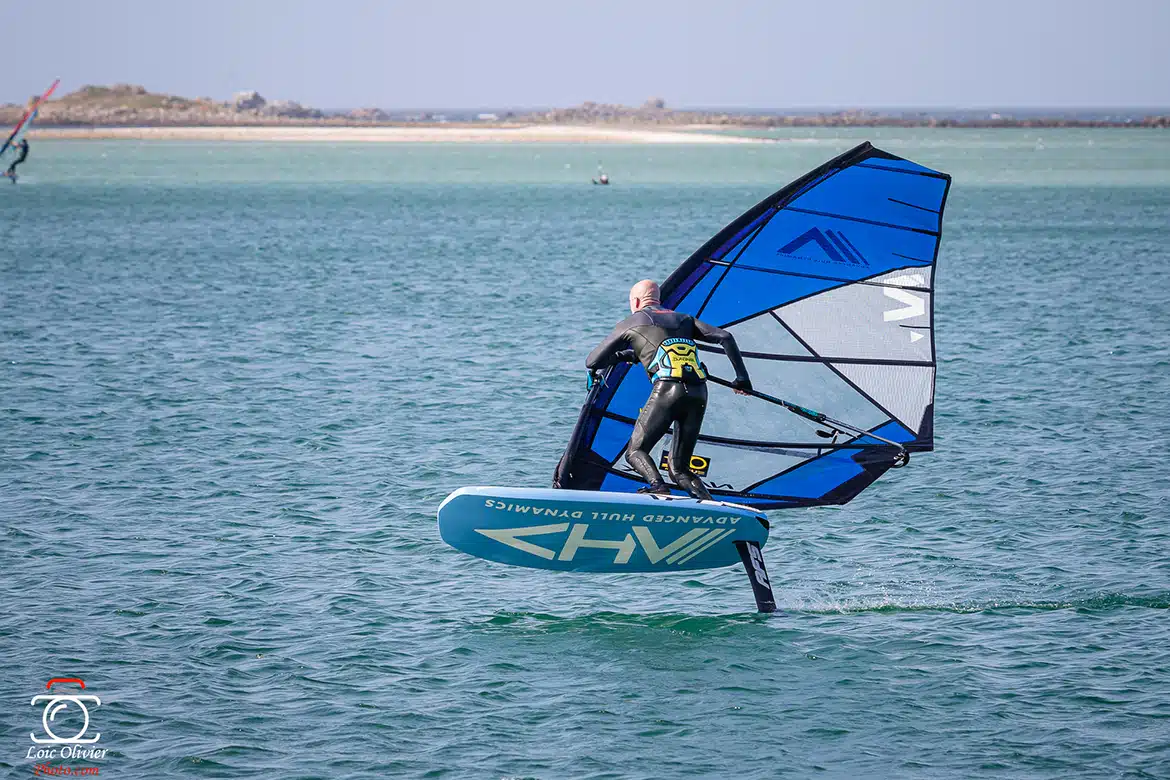
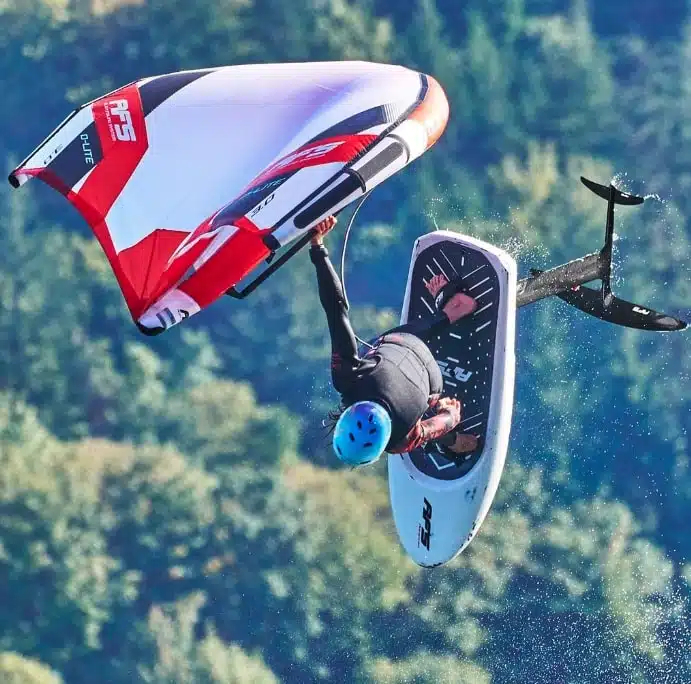
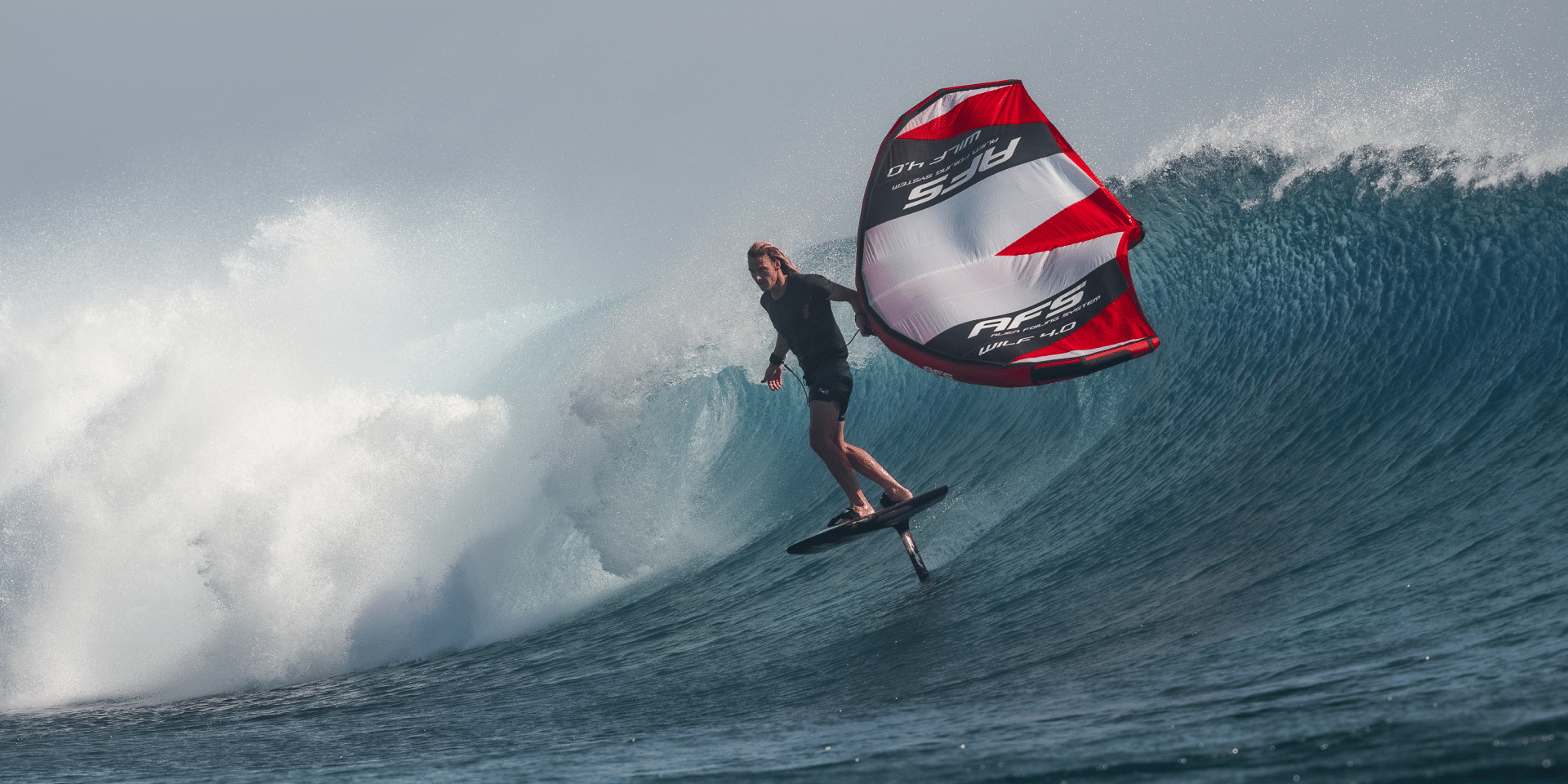
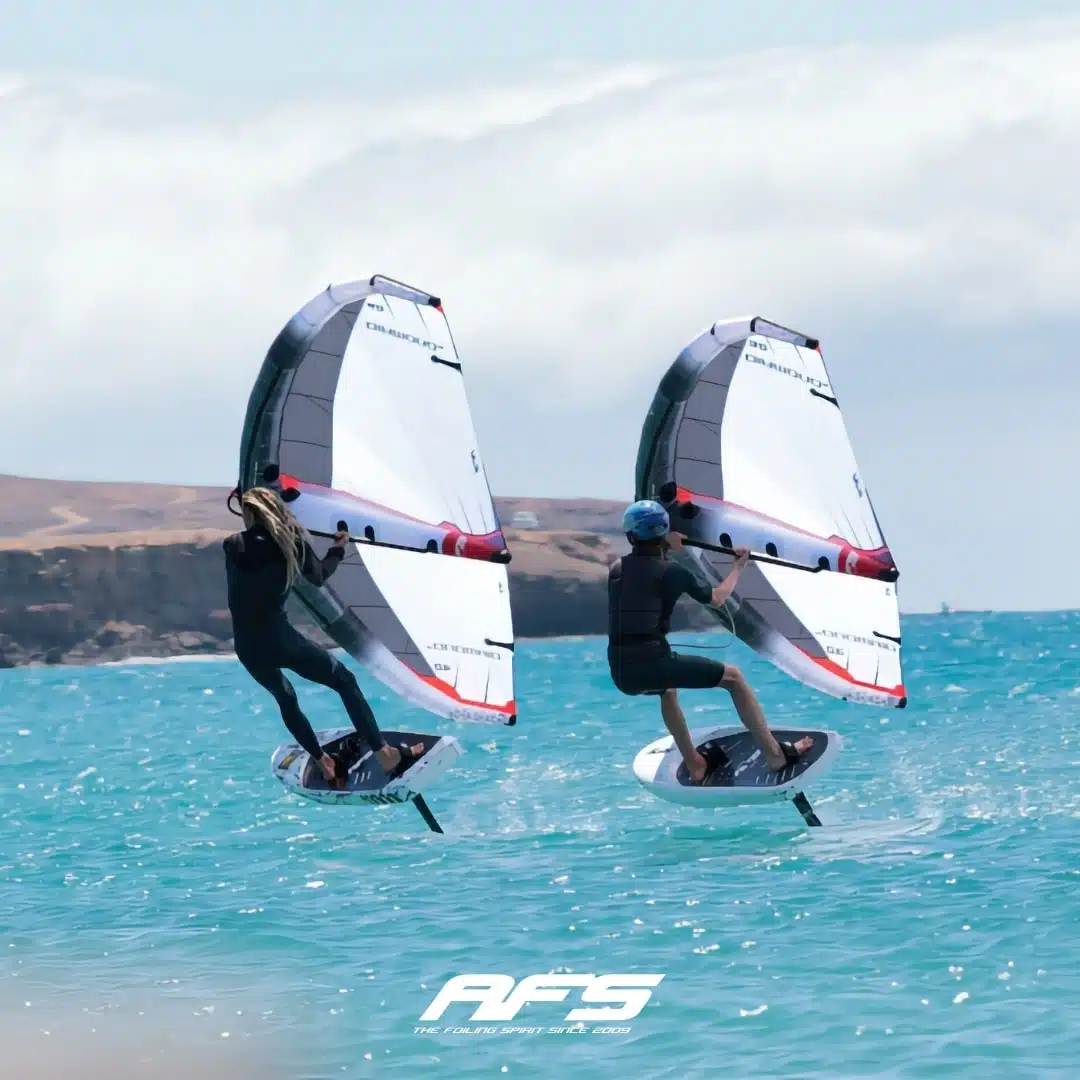
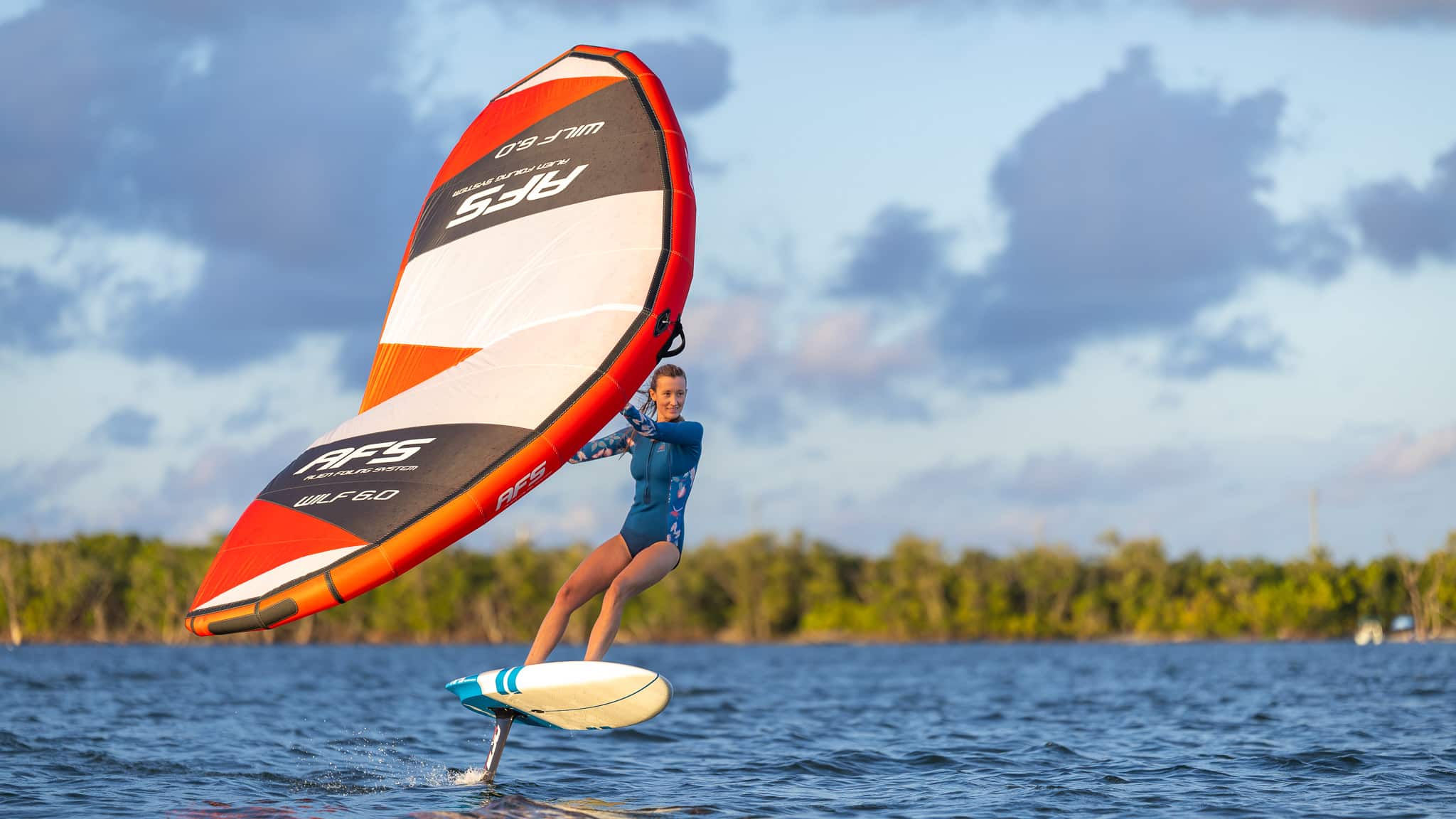

You will receive a product in excellent condition, with a few minor scratches from use.
Your product may have a few minor scratches or visual defects, but it's ready to take to the water again!
Despite deeper scratches or more pronounced visual defects, your product can take to the sea without hesitation: at this price, it's a shame to miss out!